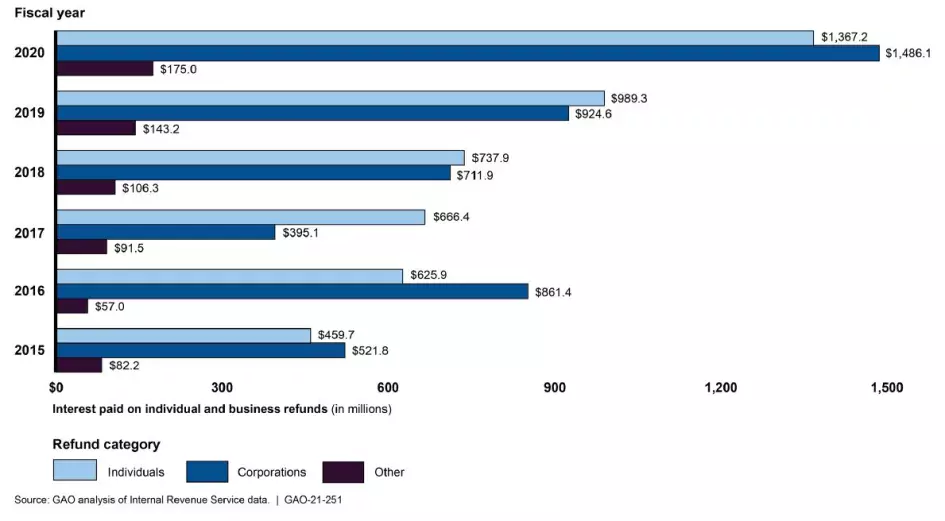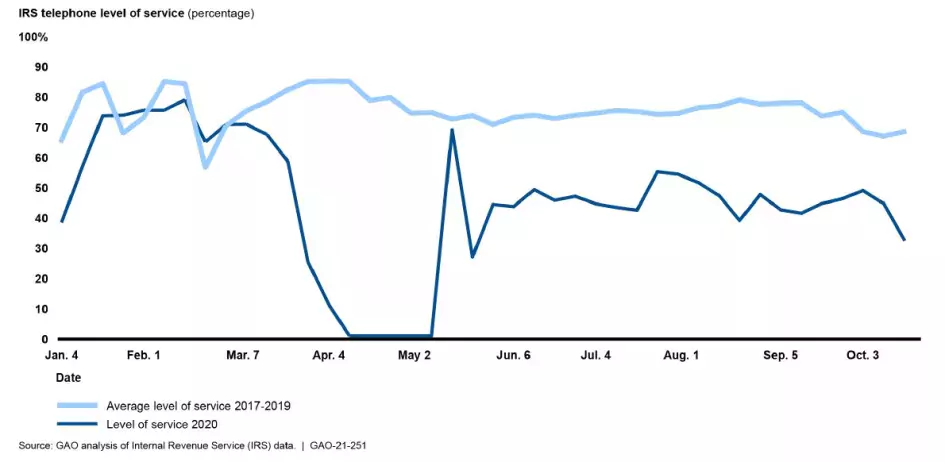More Delays Ahead—Pandemic Continues to Slow Down IRS
It’s tax season again. But does it feel like it just ended? Maybe it feels that way because last year the IRS extended the tax filing deadline to July 15 in response to COVID-19. However, the pandemic had broader impacts than just moving the filing deadline. For example, last March, IRS also closed all its processing and service facilities for several weeks before re-opening at a limited capacity to help protect the health and safety of employees and taxpayers.
Last week, IRS announced it would also extend this year’s filing deadline for individual taxpayers to May 17.
Today’s WatchBlog takes a look at the challenges IRS faced during the last filing season, the ones that remain, and how these issues might affect taxpayers.
The paper jam
If you filed your tax return on paper, IRS may not have gotten to it by the end of 2020. That’s because after closing its processing centers for several weeks and then re-opening them with limited staff, IRS faced an enormous backlog of work—including millions of pieces of unopened mail and paper tax returns.
By the end of 2020, IRS had opened all the mail it had received that year, but still had more than 13 million returns to process and 4 million pieces of taxpayer correspondence to respond to, including perhaps your 2019 tax return.
Also, while most individual taxpayers file electronically, this generally isn’t the case for businesses. In 2020, only about 23% of businesses filed on paper even though e-file options were available. IRS hasn’t fully assessed why businesses continue to file on paper, so we recommended that IRS identify barriers businesses face to e-filing and take action to remove these barriers.
Want to know more about the challenges facing IRS during last year’s tax filing season? Listen to our podcast with GAO’s Jessica Lucas-Judy, an expert on tax policy.
IRS paid taxpayers interest on delayed refunds
By law, IRS is generally required to pay interest on refunds issued to taxpayers later than 45 days after the filing deadline. IRS paid interest on many taxpayer refunds last year because it extended the tax filing deadline from April 15 to July 15, and because it was having trouble processing returns in a timely manner. In FY 2020 alone, IRS paid about $3 billion in interest to taxpayers whose refunds were delayed, in part due to COVID-19 and the backlog of paper tax returns. This was nearly a 50% increase compared to the prior year’s refund interest payments of $2 billion. With millions more returns from the end of 2020 yet to be processed, and the next tax filing season underway, IRS is likely to pay more interest to taxpayers waiting for their refund.
Interest Paid on Individual and Business Refunds (in Millions), Fiscal Years 2015-2020
Image

Problems with getting help from IRS
If you needed help from IRS in 2020, you may have encountered some difficulties. IRS closed in-person services for several weeks in spring 2020 and live phone assistance was completely unavailable. In May 2020, IRS reopened live phone assistance lines and many IRS staff who provided this help did so safely from their homes, but wait times to speak to an assistor were longer than usual. The below graphic shows the percentage of taxpayers seeking and reaching telephone assistance.
IRS Telephone Level of Service, 2017-2019 Filing Season Average Compared to 2020 Filing Season
Image

With fewer IRS staff answering phone calls, taxpayers relied on IRS’s online services. During 2020, IRS’s website received 1.4 billion visits, about three times as much traffic compared to 2019.
If you needed to find information on COVID-19 related tax relief, IRS’s website was your best bet. IRS also added online tools to help taxpayers file for and track the status of their economic impact payments.
Challenges continue during the 2021 filing season
With the pandemic lasting into 2021, IRS is facing many of these same problems this tax season as it did last year. In March, we reported that IRS had not fully identified and assessed risks associated with the current tax filing season. These included risks that IRS is struggling with today, including a significant backlog of unprocessed returns from last year as new returns come in, and a number of staff who are still not able to work at full capacity.
We recommended that IRS take action to address processing delays and risks to the 2021 filing season. Addressing our recommendations will help IRS provide better customer service and process tax returns in a more timely way and get refunds to taxpayers.
- Comments on GAO’s WatchBlog? Contact blog@gao.gov.
GAO Contacts
Related Products

GAO's mission is to provide Congress with fact-based, nonpartisan information that can help improve federal government performance and ensure accountability for the benefit of the American people. GAO launched its WatchBlog in January, 2014, as part of its continuing effort to reach its audiences—Congress and the American people—where they are currently looking for information.
The blog format allows GAO to provide a little more context about its work than it can offer on its other social media platforms. Posts will tie GAO work to current events and the news; show how GAO’s work is affecting agencies or legislation; highlight reports, testimonies, and issue areas where GAO does work; and provide information about GAO itself, among other things.
Please send any feedback on GAO's WatchBlog to blog@gao.gov.



